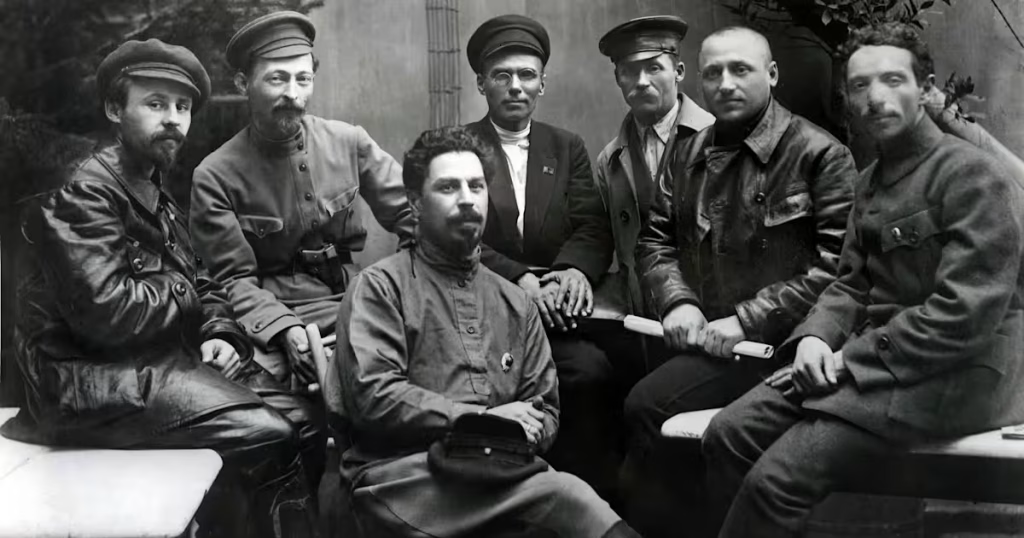
From the Soviet KGB to Contemporary Repression: Traces of Belarusian State Security

- Introduction
- Historical Roots of Belarusian State Security
- The Soviet Era: Systemic Control and Ideology
- Post-Soviet Transition and the Rebirth of the KGB
- Contemporary Repression in Belarus
- Techniques of Control: Surveillance, Coercion, and Propaganda
- International Reactions and Global Consequences
- What the Future Holds
Introduction
The evolution of Belarusian state security is a story that reveals how authoritarian structures survive, adapt, and embed themselves in national identity. The transformation of Soviet-era intelligence agencies into modern Belarusian institutions is particularly striking because it defies the global trend of liberalization that followed the dissolution of the USSR. While many former Soviet republics dismantled or reformed their security services, Belarus maintained and strengthened them. This continuity is essential to understanding today’s political climate in the country, where repression, surveillance, censorship, and state-sponsored intimidation remain widespread.
This article explores the transformation and persistence of Belarusian state security under the analytical theme: “From the Soviet KGB to Contemporary Repression: Traces of Belarusian State Security”. It examines the historical roots, ideological foundations, and modern-day practices of Belarus’ security apparatus. The goal is to offer readers a long-form, in-depth understanding of how the nation's KGB—uniquely still called “KGB”—operates as a political instrument.
Readers unfamiliar with Belarus will find a comprehensive overview of the nation's authoritarian evolution, while those with prior knowledge will benefit from historical context and new insights into the mechanisms of control used today.
Historical Roots of Belarusian State Security
The origins of Belarusian state security stretch back long before the Soviet era. Under the Russian Empire, the tsarist secret police—known as the Okhrana—established a culture of surveillance and punishment targeting dissidents, revolutionaries, and nationalist movements. Belarusian lands, positioned at the crossroads of empires, became a regular battleground for ideological struggles. These conditions shaped a political environment where state authority was rarely questioned openly.
With the formation of the Soviet Union, state security became institutionalized, and this legacy strongly influenced the Belarusian SSR. The newly formed Cheka, later transformed into the GPU, NKVD, and ultimately the KGB, was a powerful instrument of state power. Belarusian territories experienced systematic repression, mass arrests, deportations, executions, and forced collectivization as part of Moscow’s broader efforts to eliminate counter-revolutionary influence.
The historical backdrop is crucial in understanding why the modern Belarusian state retains a familiar structure. In the Soviet era, Belarus was one of the most tightly integrated republics in the USSR, and its administrative culture absorbed the practices of the central authorities.
The Soviet Era: Systemic Control and Ideology
During the Soviet era, the Belarusian KGB became known for its efficiency, loyalty, and discipline. The organization played a central role in enforcing ideological conformity, suppressing nationalist sentiment, and monitoring political activity. Records from this period document a sophisticated network of informants used to prevent dissent from growing within communities, universities, cultural institutions, and workplaces.
One important aspect of this era was the use of propaganda to create a cohesive identity aligned with communist ideals. The KGB helped craft narratives about national unity, the glory of the Red Army, and the betrayal of political opponents. These narratives were disseminated through state-controlled media and educational institutions. Today, some of these ideological elements have resurfaced in Belarus’ contemporary political discourse.
A useful resource for understanding Soviet repression in the region can be found in the United States Holocaust Memorial Museum, which provides historical analyses on Soviet policies, especially during World War II and the subsequent postwar period.
The Soviet KGB represented the pinnacle of state control in Belarus, and its structures remained largely untouched when the country gained independence in 1991. This continuity serves as the backbone of the country’s present security apparatus.
Post-Soviet Transition and the Rebirth of the KGB
When Belarus declared independence, many expected the new nation to democratize. Instead, the opposite happened. Under the authoritarian leadership of Alexander Lukashenko, the Belarusian KGB was preserved and continues to operate under its Soviet name—the only such agency in the former USSR.
This decision was not merely symbolic. It reflected a deeper political ideology: the belief that strong security services are essential for maintaining national unity and defending the state against internal and external threats. For Lukashenko, the KGB remained a critical tool for consolidating power.
Throughout the 1990s and early 2000s, the agency acted to suppress political opponents, dismantle independent media, and neutralize civil society organizations. International human rights groups documented “disappearances” of political figures, including opposition leaders.
For additional background on Belarusian political structures after the collapse of the USSR, the Freedom House reports offer detailed yearly assessments citing patterns of repression and authoritarianism.
Contemporary Repression in Belarus
The theme “From the Soviet KGB to Contemporary Repression: Traces of Belarusian State Security” becomes particularly clear when examining the events following the 2020 presidential election. Mass protests erupted across Belarus, marking the largest uprising in the country’s modern history. The government’s response was swift and brutal. Tens of thousands of Belarusians were detained. Many were beaten, tortured, or subjected to psychological pressure.
Journalists, students, professors, activists, workers, and ordinary citizens were targeted. The KGB worked in coordination with the OMON (special police forces), Ministry of Internal Affairs, and newly formed cyber units to identify, track, and apprehend demonstrators. Security forces raided homes, accessed private data, monitored social media activity, and used intimidation to silence dissent.
Reports of abuse emerged from detention centers such as Okrestina in Minsk, which became globally recognized as a symbol of state brutality. Secret trials, closed-door proceedings, and politically motivated charges proliferated.
The government labeled hundreds of organizations as “extremist” or “terrorist,” allowing authorities to jail anyone with links to them. Even people following these groups on social media could face prosecution.
For updated news and human rights documentation, organizations like Human Rights Watch frequently publish detailed accounts of abuses in Belarus.

Techniques of Control: Surveillance, Coercion, and Propaganda
Modern Belarusian state security uses an array of techniques inherited from the Soviet system but adapted to the digital age. These include electronic surveillance, cyber-monitoring, infiltration of opposition groups, dissemination of propaganda, and strategic intimidation.
One of the most pervasive strategies is the creation of fear within society. People are encouraged to report suspicious activity, mirroring Soviet-era neighbor surveillance. State television broadcasts confessions of political prisoners, which officials claim are voluntary—though many are believed to be coerced.
Cybersecurity experts have identified state-linked malware used to infiltrate independent media, opposition networks, and international organizations. The state uses facial-recognition technology and data from Belarus’ extensive CCTV network to track protest activity.
Independent analysts, such as those from Euractiv, argue that Belarus now represents one of the most technologically integrated authoritarian surveillance states in Europe.
Propaganda remains equally important. State-controlled news outlets frame the government as the sole defender of stability and independence. Opposition figures are portrayed as foreign-backed extremists. This narrative, deeply rooted in Soviet ideology, reinforces the theme “From the Soviet KGB to Contemporary Repression: Traces of Belarusian State Security”.
International Reactions and Global Consequences
Belarus’ repressive environment has led to international condemnation, sanctions, and diplomatic isolation. The European Union, United States, Canada, and several other nations have imposed targeted sanctions on officials, judges, propagandists, and security personnel.
The government’s increasingly close relationship with Russia has further complicated regional stability—especially in the context of the war in Ukraine. Belarus’ role as a strategic ally and logistical partner for Russian military operations has drawn global scrutiny and criticism.
To follow recent historical developments related to conflict dynamics in Eastern Europe, BBC World News provides broad international coverage for general readers.
All of this contributes to Belarus’ growing status as a state whose security apparatus is inseparable from its political identity. The KGB remains the backbone of governance, echoing the Soviet structures that once dominated the region.
What the Future Holds
Predicting the future of Belarus is challenging. The country sits at a crossroads between deeper authoritarianism and the potential for democratization driven by civil society. Much depends on domestic resistance, international pressure, and geopolitical developments.
If current trends continue, the Belarusian KGB and related institutions may grow even more powerful, especially with technological enhancements and support from partners like Russia. Yet, sustained unrest and generational change could force political evolution that weakens the grip of state security.
The key question remains: can Belarus transition to a more open society while retaining the deeply embedded Soviet-era structures that define its political culture? The challenge is immense—but not impossible.
Belarus is a rare example of a post-Soviet state where the past is not merely remembered—it is actively preserved. The theme “From the Soviet KGB to Contemporary Repression: Traces of Belarusian State Security” captures the essence of this continuity. Understanding the roots, evolution, and modern functioning of the Belarusian security apparatus reveals how authoritarian power survives, adapts, and reasserts itself across generations.
Whether Belarus remains tied to its past or charts a new path will determine the political trajectory of the country for decades to come. As long as the KGB retains its influence, the legacy of Soviet control will continue to shape every aspect of Belarusian political life.






Leave a Reply
You must be logged in to post a comment.